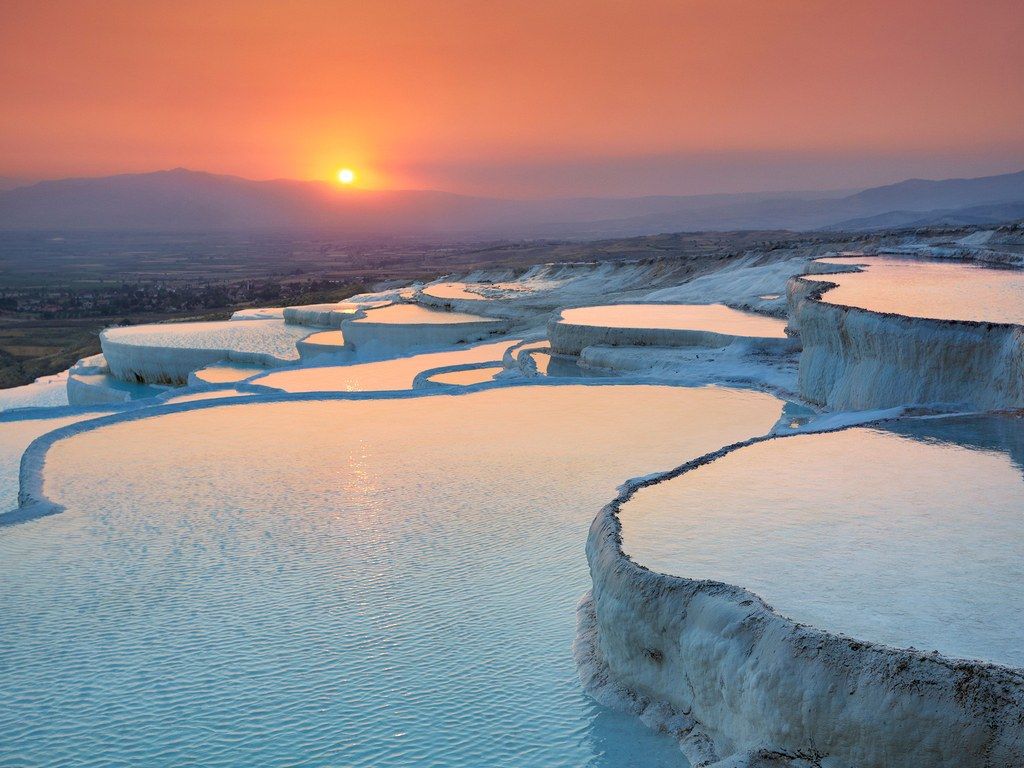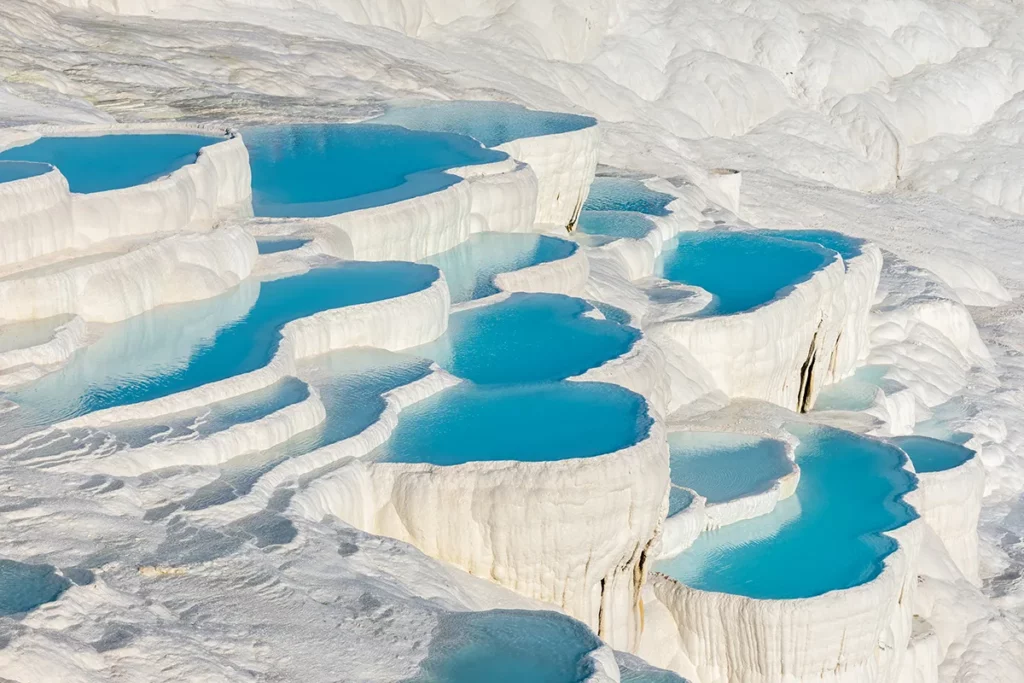Pamukkale, a surreal natural wonder in southwestern Turkey, is known for its dazzling white terraces that cascade down the mountainside like a frozen waterfall. The name “Pamukkale,” which translates to “Cotton Castle,” perfectly captures the ethereal beauty of this UNESCO World Heritage site. Formed by mineral-rich thermal waters, Pamukkale is a destination where nature and history intertwine, offering visitors both relaxation and a glimpse into the ancient past.

The White Terraces: Nature’s Masterpiece
The terraces of Pamukkale are formed by calcium-rich hot springs that have flowed down the mountainside for thousands of years. As the water cools, it leaves behind deposits of white travertine, creating a series of natural pools that resemble layers of cotton or snow. The effect is truly mesmerizing—a shimmering landscape of pristine white against the deep blue skies of Turkey.
Visitors are often captivated by the beauty of the terraces, which are not only visually stunning but also offer a unique experience. Walking barefoot on the warm, smooth travertine feels like stepping on clouds, and the thermal pools invite you to take a dip in their soothing waters.
Healing Waters: A Legacy of Wellness
Pamukkale has been famous for its healing waters since ancient times. The thermal springs are believed to have therapeutic properties, beneficial for skin conditions, arthritis, and digestive issues. Even today, people flock to Pamukkale to bathe in the mineral-rich pools, seeking the restorative powers that have been cherished for centuries.
These thermal waters maintain a constant temperature of around 36°C (96.8°F) and are rich in calcium, magnesium, and bicarbonate. The combination of these minerals is said to have rejuvenating effects, making Pamukkale a natural spa destination like no other.
The Ancient City of Hierapolis
Overlooking the terraces is the ancient city of Hierapolis, a historical treasure that dates back to the 2nd century BC. Founded as a thermal spa, Hierapolis became a thriving city under Roman rule. Today, the ruins of Hierapolis offer a fascinating glimpse into the past, with its impressive theater, ancient bathhouses, and the Temple of Apollo.
One of the most intriguing features of Hierapolis is the Necropolis, a vast ancient cemetery that stretches over two kilometers. The city was a popular destination for the sick and elderly, who came seeking healing in Pamukkale’s waters. As a result, Hierapolis became a final resting place for many, adding to its historical significance.
A Journey Through Time and Nature
Visiting Pamukkale is like stepping into a world where time stands still, and nature reigns supreme. Whether you are soaking in the thermal pools, wandering through the ancient ruins of Hierapolis, or simply marveling at the cotton-white terraces, Pamukkale offers an unforgettable experience. It’s a place where the wonders of the natural world meet the echoes of history, creating a destination that is as magical as it is healing.
